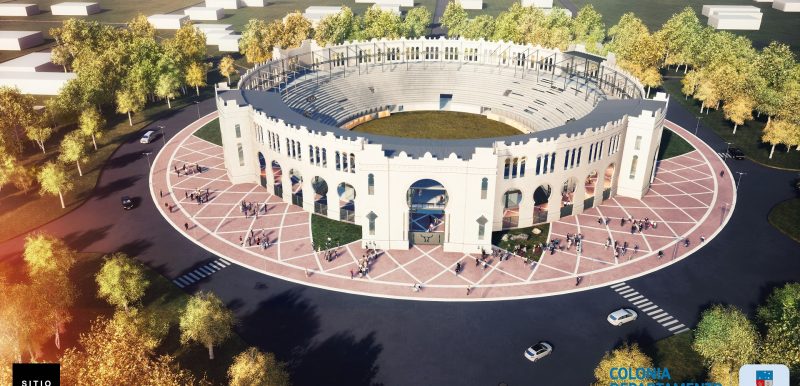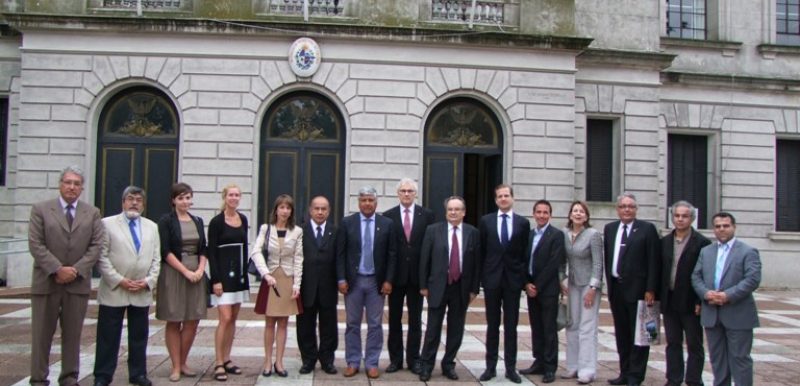Colonia del Sacramento, Uruguay
General Information
Regional secretariat
Administrative status
City in southwestern Uruguay, capital of the Colonia Department
Historic Quarter of the City of Colonia del Sacramento
Registration Year
1995
Historical function
Trade
Location and site
On the north bank of the Rio de la Plata estuary, upriver from Montevideo, Colonia del Sacramento is situated at the tip of a peninsula. Higher in elevation at the centre, it is surrounded by water on three sides and its relief drops towards the coast.
Urban morphology
During these turbulent centuries, the urban fabric of Colonia del Sacramento remained intact. The plan, which did not follow the “Laws of the Indies” of 1573, adapted to the site’s topography and to the uneven profile of its coastline; the fortifications, since demolished, also influenced the urban design. The variations in the scale of the streets and squares, which are often paved, still add to the originality and spontaneity of the configuration.
Within this landscape – which dates to the 17th, 18th and 19th centuries – Portuguese, Spanish and post-colonial architectural elements are superposed. The ensemble, which is one or two storeys in height, is dominated by the towers of the Church of the Holy Sacrament and the lighthouse. White facades with numerous arcades line the streets of this estuarine city.
Registration criteria
Criterion (iv): The historic quarter of the city constitutes a remarkable testimony, in its plan and its monuments, to the character and the objectives of a European colonial city, particularly during the decisive period at the end of the 17th century.
Historical reference
- Upon its foundation in 1680, Nova Colonia do Santissimo Sacramento was deeply involved in a border conflict between Spanish Argentina and Portuguese Brazil around the Rio de la Plata. After being attacked by the Spanish and handed over to the Portuguese, the city developed in the 1690s around its first religious buildings.
- During the War of the Spanish Succession (1702-1714), Colonia del Sacramento was besieged once again and razed in 1704 and 1705. Portuguese sovereignty was recognized when the Treaty of Ultrecht was signed in 1713.
- From 1722 until 1749, under Governor Antonio Pedro of Vasconcellos, the reconstructed and fortified city’s cultural role and function as a commercial warehouse influenced the entire colony. Routes to Sao Paolo and Minas Gerais, the mining heart of Brazil, were opened in the 1730s. Colonia del Sacramento participated in the foundation of the Vice-royalty of Rio de la Plata in 1776.
- During subsequent conflicts, Colonia del Sacramento was handed over alternatively to the Spanish and the Portuguese until the Treaty of Ildefonso was signed in 1777 and the latter renounced it in exhange for land in the upper Parana. Apart from some destruction, the essential components of its urban fabric have been preserved.
- During the Wars of Independence (1810-1828), the main church was damaged. In 1859, after the “Great War” against Argentina (1839-1851), the remains of the fortifications were demolished. Power was passed to the more recent city of Montevideo (1726), located downriver from Colonia del Sacramento.
Photos
News
17 October 2019
Rehabilitation of the Plaza de Toros of Colonia del Sacramento
Colonia del Sacramento, Uruguay
Zoom on Urban Heritage
5 February 2015
Meeting of the Board of Directors in Colonia del Sacramento, Uruguay
Colonia del Sacramento, Uruguay
Contact
Dr. Carlos Moreira Reisch
Intendente de Colonia
Intendencia de Colonia
Palacio de Gobierno Departamental, Av. General Flores 467
Colonia del Sacramento, Colonia, Uruguay
70000
59 845 225 171
[email protected]
Arq. Walter Debenedetti
Director de Patrimonio
Intendencia de Colonia
Rivera 227
Colonia del Sacramento, Colonia, Uruguay
70000
+598 4522 7000 int. 279
[email protected]





